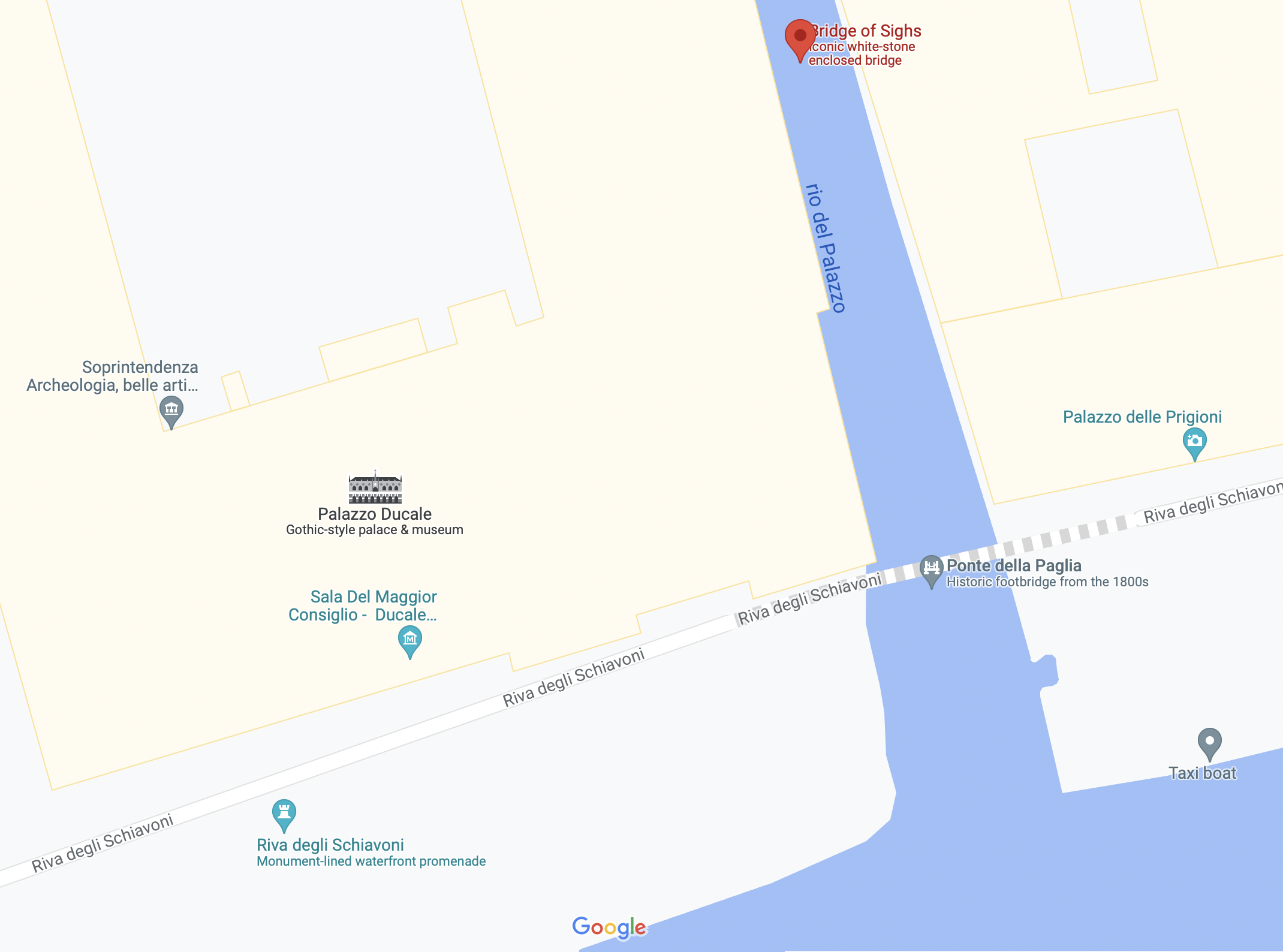TRIPTYCH and more at the Bridge of Sighs in Venice.
TRIPTYCH
a: a picture (such as an altarpiece) or carving in three panels side by side
b: something composed or presented in three parts or sections
LOCATION
You have a fantastic view if you stand on the Ponte della Paglia – a footbridge that dates to the early 1800s. You see the San Marco Basin and buildings beyond that, facing the water, and Gondolas and water taxis are parked on each side of a dock. You can see the waterfront promenade extending towards the Piazza San Marco and beyond in the southeastern direction. Facing north, you see the Bridge of Sighs above a typical Venetian canal.
In the past, a prisoner walking on that bridge would have their last view of the magnificent San Marco Basin before disappearing into the confinement.
I stood on the Ponte della Paglia and took in the sights.
INSPIRATION
If you perform a google search using the term “bridge of sighs Venice,” it returns 14,50,000 eateries – all with images. In other words, hundreds of thousands of tourists have incessantly photographed this whole area, day and night, and in varying weather. In such situations, one can take a snapshot for the personal satisfaction of capturing your image. However, if you want to make an image instead of a snapshot, you must do some serious thinking. And I wanted to make an image. At that moment, two thoughts from a book by John Berger – Understanding a Photograph – occurred to me. They are:
I have decided that seeing this is worth recording
John Berger, Understanding a Photograph
The degree to which I believe that this is worth looking at can be judged by all that I am willingly not showing because it is contained within it.
John Berger
Now I had to sketch my way towards making an image or a series of images that captured the “quantum of truth” that I felt needed communicating about this place. Since the communication of this quantum of truth in an image cannot occur without an observer, it was imperative that I exclude all that was not necessary.
I resorted to my go-to approach of capturing multiple images with the intent of combining them later. With me I had a Canon R5 and Canon EF 17mm TSE tilt-shift lens, and Leica Q2 Monochrom with its stellar 28mm lens.
And with the Q2M, I got the following:
Fair enough, pretty enough. But both lacked the feeling I wanted to convey. Had to dig deeper. THINK!
That is when I noticed the relief of a man in agony. I said to myself, maybe if I include it in the foreground, it will add a sense of distress to this scene. Pain that a prisoner walking towards the gallows or loved ones standing outside on the Ponte della Paglia must have felt.
Both images shown above seemed like an improvement. I now had named the emotion that I wanted to get across. But it still lacked the contrasting emotion. There had to be something that tonally, visually, or emotionally could stand in as the opposing end of the spectrum. Instead of sorrow, I needed something joyous, opposed to stifling, needed an uplifting symbol; instead of claustrophobia, I needed open space; and finally, I needed to show a way out, if possible. Was there something else that I could use?
That was it, I thought! The striped shirt reminded me of the prisoner’s outfit from the movies. His movement was ambiguous: is he disembarking from or embarking on the gondola? Is he coming, or is he going? The bird flying above seemed a perfect metaphor for freedom. Buildings shrouded in fog that diffused and softened the early morning sunlight added a sense of intrigue and contributed to the environment of the image.
TERCET: Bringing it all together
All the altarpieces on display in Italy cannot not serve as inspiration. Triptych seemed like a perfect way of expressing the setting (the bridge of sighs), the emotions (anguish), and the solution (escape). And I thought in a tercet:
A gloomy man in relief, over a Venetian canal
A palace, a prison, and a connecting bridge
Escape, Soar, distant, mysterious destination awaits
Panel 1: Standing on the Ponte Della Paglia, if you look north, you see the Bridge of Sighs (Ponte de i Sospiri) connecting the interrogation rooms in the Doge's Palace and the New Prison (Prigioni Nuove) and a distressed man in relief in the foreground.
Panel 2: If you look Straight towards the Ponte de I Sospiri, you can see the Doge’s Palace on the west and the prison on the east. In the past, a prisoner walking on that bridge would have their last view of the magnificent San Marco Basin before disappearing into the confinement.
Panel 3: In the opposite direction – the last view a prisoner would have, you see a man in a striped shirt, a shirt that a prisoner sometimes would wear, disembarking from or embarking on a gondola. Free as a soaring bird, or headed to the prison?



